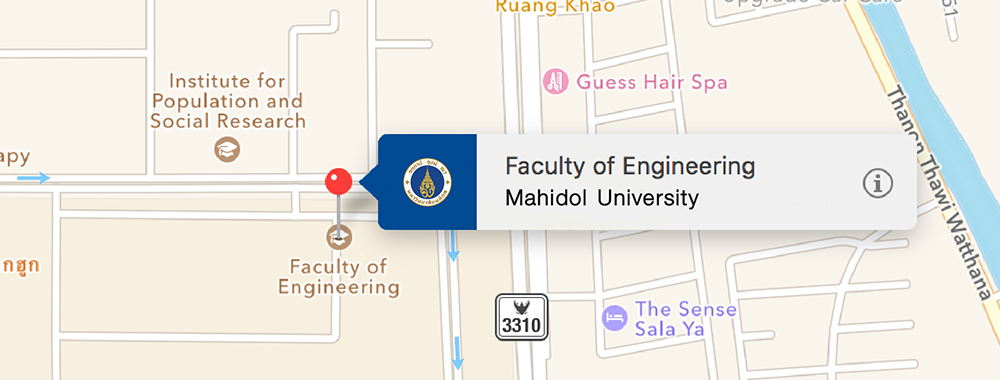PM 2.5 Exposure and Health Management Measures for the Thai Population
Impact of PM 2.5 on human health
PM 2.5 are particulate matters with diameter averaging less than 2.5 µm that are suspended in the air. These particulate matters can combine with water vapor, smoke and other gases in the environment. Their health impacts are as follow.
- Impact on the respiratory system. Short term exposure can exacerbate and worsen symptoms of chronic respiratory conditions. This includes allergic rhinitis, asthma, and chronic obstructive pulmonary diseases. Long-term exposure may increase the risk of emphysema and lung cancer
- Impact on other systems in the human body. Besides the impact on the respiratory system, the majority of studies of PM 2.5 health effects focus on aspects public health and epidemiology. In animal studies, both the acute and long term increase in the amount of PM 2.5 in the air are associated with increased incidence of heart and blood vessel diseases that affect the cardiovascular system and the brain. Chronic exposure to high levels of PM2.5 has been associated with the development of dementia. The mechanisms whereby PM 2.5 causes disease is postulated to be related to the increase of free radicals which in turn increase the inflammation in specific areas of the body. In addition, PM 2.5 may be carriers of other harmful toxins such as heavy metals and carcinogens, namely poly cyclic aromatic hydrocarbons (PAH) which have been implicated as the cause of lung cancer.
The etiology of PM 2.5
PM 2.5 in Bangkok and metropolitan areas have origins from four main sources
- Automobile exhaust for which diesel fuel is the main culprit
- Burning of biological materials both in open and enclosed areas
- Secondary dust generated from the combination of automobile exhaust
- Burning of fossil fuels in factories and electrical generator plants
It is important to recognize that PM 2.5 is not a new problem. Rather, it is a continuously increasing and evolving problem in Bangkok and metropolitan areas during the last few years. Especially in January to March when the air is very still and there is no wind, PM 2.5 levels over a 24-hour period can be above the standard acceptable levels for 40-50 days out of the year. In addition, the amount of PM 2.5 vary according to geographic location, environment and time of day. Specifically, PM2.5 levels will be increased in the mornings and evenings, while remaining low during the day.
Immediate health measures to reduce the impact of PM 2.5.
In order to appropriately manage the problems of PM2.5, it is important to evaluate the situation in individual areas since the amount of PM 2.5 can differ widely depending on geographic locations environment and time of day. Currently there are applications and websites available which stratify the severity of PM2.5 in different areas according to colors. Examples of these applications include Air4Thai, AirVisual, AirQuality or www.aqicn.org/city/bangkok. If this information are not available, observations of air quality or warnings from appropriate authorities can be substituted. Equally as important is the ability to evaluate health conditions of individuals in the community. The elderly, pregnant women, and those with respiratory or cardiovascular diseases are considered at high risk for severe health effects. The health measures to be taken should differ according to the severity of PM 2.5 situation and health conditions of these individuals.
Areas designated YELLOW where levels are moderate.
Persons: Individuals in these areas can remain outdoors and activities outdoors are permitted. If work activities require prolonged periods outdoors, or the individuals are in the high risk group, consider wearing a mask and alternating activities between in door and out door.
Locations: For homes and offices, windows can be opened as long as there are no high risk individuals. Schools and offices should consider adjusting operating hours and reducing any required outdoor activities.
Environment: Vehicles can enter the area as usual. Persons should refrain from burning trash in the area. Community members are encouraged to plant leafy trees, especially those that are vines, perennials or specific types of bushes.
Areas designated ORANGE where the level can begin to impact health.
Persons: Healthy individuals should consider reducing outdoor activities, including exercise. Those whose occupations require extended time out door should wear protective mask and alternate activities between in door and out door. Those in high risk groups should reduce outdoor activities or wear a protective mask when outdoor.
Locations: Keep doors and windows closed and turn on air-conditioning and air filters, where available. Schools and offices should reduce operating hours and cancel scheduled outdoor activities.
Environment: Vehicles can enter the area as usual. Persons should refrain from burning trash in the area. Community members are encouraged to plant leafy trees, especially those that are vines, perennials or specific types of bushes.
Time: PM 2.5 levels vary with time of day and rise during the morning and evening hours. Follow the situation closely to monitor any sudden changes in air quality.
Areas designated RED where the level can impact health.
Persons: Healthy persons should reduce the hours out door. Refrain from outdoor exercises. If occupation requires extended activities outdoor, protective mask needs to be worn and individuals should have alternating periods indoor. High risk groups should refrain from outdoor activities and where protective masks when required to be outdoor.
Locations: Close doors and windows at home and use air-conditioning and air-filtering devices when available. Schools and offices should be closed.
Environment: Reduce the access of vehicles, especially those utilizing diesel fuels, to the area. Manage the flow of traffic to avoid congestions.
Persons should refrain from burning trash in the area. Community members are encouraged to plant leafy trees, especially those that are vines, perennials or specific types of bushes.
Time: PM 2.5 levels vary with time of day and rise during the morning and evening hours. Follow the situation closely to monitor any sudden changes in air quality.
Measures to prevent the health impacts of PM 2.5 on individuals
Currently, there are increasing data which show that antioxidant nutritional supplements, in particular, vitamin C, vitamin E and fish oil, can help reduce the impact of PM 2.5 on individual’s health.
















